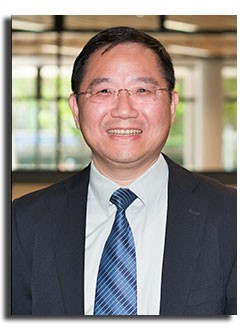
Abstract
Compared to current silicon-based solar cells that are rigid, organic-based solar cells that use solution-based processing deposition techniques are simpler and potentially less expensive to manufacture. Organic photovoltaic cells can be made flexible, semitransparent and are light weight, offer more opportunities for application in new markets such as mobile electronics, disposable electronics, smart cards, power generating windows, smart sensors, automotive, home appliances and outdoor lifestyle etc.
Its unique flexibility and semi-transparency feature also adds a decorative and aesthetic dimension to the solar cells so that it can be used on curved surface. After a brief overview of ITO-based transparent cathode, the enhancement of semitransparent organic solar cells over the two competing performance indices of power conversion efficiency and transmittance will be discussed. Our recent research progress in developing semitransparent organic solar cells will be presented.
Click here to see all available video seminars.
Click here to go to the SPREE HOMEPAGE.
Brief Bio
Furong Zhu is a Professor in the Department of Physics and Institute of Advanced Materials (IAM) at Hong Kong Baptist University (HKBU). He received his BSc and MSc in Physics from Fudan University, Shanghai China, in 1983 and 1987. He completed his Ph.D in Applied Physics at Charles Darwin University in Australia from 1990-1993. He did his post-doctoral research in the Department of Electrical and Electronic Engineering at Kyoto University in Japan from 1993-1995, and was a Research Fellow with the Department of Physics at Murdoch University in Australia from 1995-1997 working on silicon thin films derived from plasma enhanced chemical vapor deposition (PECVD) for device application.
He joined Institute of Materials Research and Engineering (IMRE) in Singapore in 1997. Prior to HKBU, he was a Senior Scientist and a Program Manager leading the organic light-emitting diode (OLED) and organic photovoltaic (OPV) R&D activities at IMRE. He has authored/co-authored over 90 refereed journal/conference publications, and filed 8 patents in organic electronics. His research interests include device physics, surface science, nanostructures and semiconducting materials-oriented research for application in OLEDs, OPV, thin film transistors and organic sensors. He has been invited to deliver >20 keynote/invited talks at the different international conferences.
